Health Care > HESI > BrainDumps.HESI_ 285.questions & Answers With Explanations (All)
BrainDumps.HESI_ 285.questions & Answers With Explanations
Document Content and Description Below
Exam A QUESTION 1 A middle-aged woman tells the nurse that she has been experiencing irregular menses for the past six months. The nurse should assess the woman for other symptoms of: A. climac... teric. B. menopause. C. perimenopause. D. postmenopause. Correct Answer: C Section: (none) Explanation Explanation/Reference: Explanation: Perimenopause refers to a period of time in which hormonal changes occur gradually, ovarian function diminishes, and menses become irregular. Perimenopause lasts approximately five years. Climacteric is a term applied to the period of life in which physiologic changes occur and result in cessation of a woman's reproductive ability and lessened sexual activity in males. The term applies to both genders. Climacteric and menopause are interchangeable terms when used for females. Menopause is the period when permanent cessation of menses has occurred. Postmenopause refers to the period after the changes accompanying menopause are complete.Health Promotion and Maintenance QUESTION 2 When obtaining a health history on a menopausal woman, which information should a nurse recognize as a contraindication for hormone replacement therapy? A. family history of stroke B. ovaries removed before age 45 C. frequent hot flashes and/or night sweats D. unexplained vaginal bleeding Correct Answer: D Section: (none) Explanation Explanation/Reference: Explanation: Unexplained vaginal bleeding is a contraindication for hormone replacement therapy. Family history of stroke is not a contraindication for hormone replacement therapy. If the woman herself had a history of stroke or other blood-clotting events, hormone therapy could be contraindicated. Frequent hot flashes and/or night sweats can be relieved by hormone replacement therapy.Health Promotion and Maintenance QUESTION 3 Teaching about the need to avoid foods high in potassium is most important for which client? A. a client receiving diuretic therapy B. a client with an ileostomy C. a client with metabolic alkalosis D. a client with renal disease Correct Answer: D Section: (none) Explanation Explanation/Reference: Explanation: Clients with renal disease are predisposed to hyperkalemia and should avoid foods high in potassium. Choices 1, 2, and 3 are incorrect because clients receiving diuretics with ileostomy or with metabolic alkalosis are at risk for hypokalemia and should be encouraged to eat foods high in potassium.Physiological Adaptation QUESTION 4 What do the following ABG values indicate: pH 7.38, PO2 78 mmHg, PCO2 36mmHg, and HCO3 24 mEq/ L? A. metabolic alkalosis B. homeostasis C. respiratory acidosis D. respiratory alkalosis Correct Answer: B Section: (none) Explanation Explanation/Reference: Explanation: These ABG values are within normal limits. Choices 1, 3, and 4 are incorrect because the ABG values indicate none of these acid-base disturbances.Physiological Adaptation QUESTION 5 The major electrolytes in the extracellular fluid are: http://www.gratisexam.com/ A. potassium and chloride. B. potassium and phosphate. C. sodium and chloride. D. sodium and phosphate. Correct Answer: C Section: (none) Explanation Explanation/Reference: Explanation: Sodium and chloride are the major electrolytes in the extracellular fluid.Physiological Adaptation QUESTION 6 A client with Kawasaki disease has bilateral congestion of the conjunctivae, dry cracked lips, a strawberry tongue, and edema of the hands and feet followed by desquamation of fingers and toes. Which of the following nursing measures is most appropriate to meet the expected outcome of positive body image? A. administering immune globulin intravenously B. assessing the extremities for edema, redness and desquamation every 8 hours C. explaining progression of the disease to the client and his or her family D. assessing heart sounds and rhythm Correct Answer: C Section: (none) Explanation Explanation/Reference: Explanation: Teaching the client and family about progression of the disease includes explaining when symptoms can be expected to improve and resolve. Knowledge of the course of the disease can help them understand that no permanent disruption in physical appearance will occur that could negatively affect body image. Clients with Kawasaki disease might receive immune globulin intravenously to reduce the incidence of coronary artery lesions and aneurysms. Cardiac effects could be linked to body image, but Choice 3 is the most direct link to body image. The nurse assesses symptoms to assist in evaluation of treatment and progression of the disease.Health Promotion and Maintenance QUESTION 7 Which of the following is most likely to impact the body image of an infant newly diagnosed with Hemophilia? A. immobility B. altered growth and development C. hemarthrosis D. altered family processes Correct Answer: D Section: (none) Explanation Explanation/Reference: Explanation: Altered Family Processes is a potential nursing diagnosis for the family and client with a new diagnosis of Hemophilia. Infants are aware of how their caregivers respond to their needs. Stresses can have an immediate impact on the infant's development of trust and how others relate to them because of their diagnosis. The longterm effects of hemophilia can include problems related to immobility. Altered growth and development could not have developed in a newly diagnosed client. Hemarthrosis is acute bleeding into a joint space that is characteristic of hemophilia. It does not have an immediate effect on the body image of a newly diagnosed hemophiliac.Health Promotion and Maintenance QUESTION 8 While undergoing fetal heart monitoring, a pregnant Native-American woman requests that a medicine woman be present in the examination room. Which of the following is an appropriate response by the nurse? A. "I will assist you in arranging to have a medicine woman present." B. "We do not allow medicine women in exam rooms." C. "That does not make any difference in the outcome." D. "It is old-fashioned to believe in that." Correct Answer: A Section: (none) Explanation [Show More]
Last updated: 1 year ago
Preview 1 out of 139 pages
Instant download
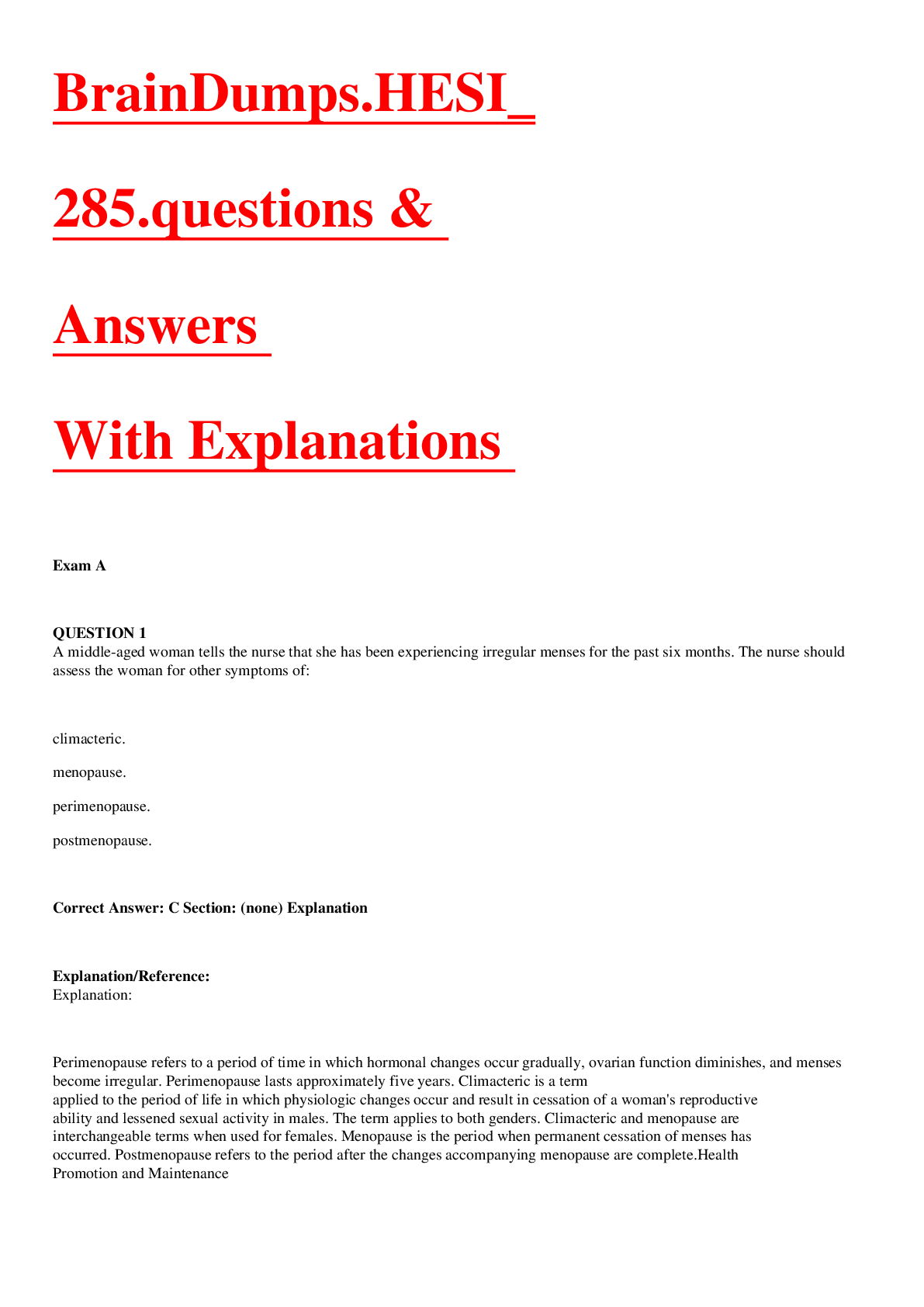
Buy this document to get the full access instantly
Instant Download Access after purchase
Add to cartInstant download
Reviews( 0 )
Document information
Connected school, study & course
About the document
Uploaded On
Mar 09, 2021
Number of pages
139
Written in
Additional information
This document has been written for:
Uploaded
Mar 09, 2021
Downloads
0
Views
57



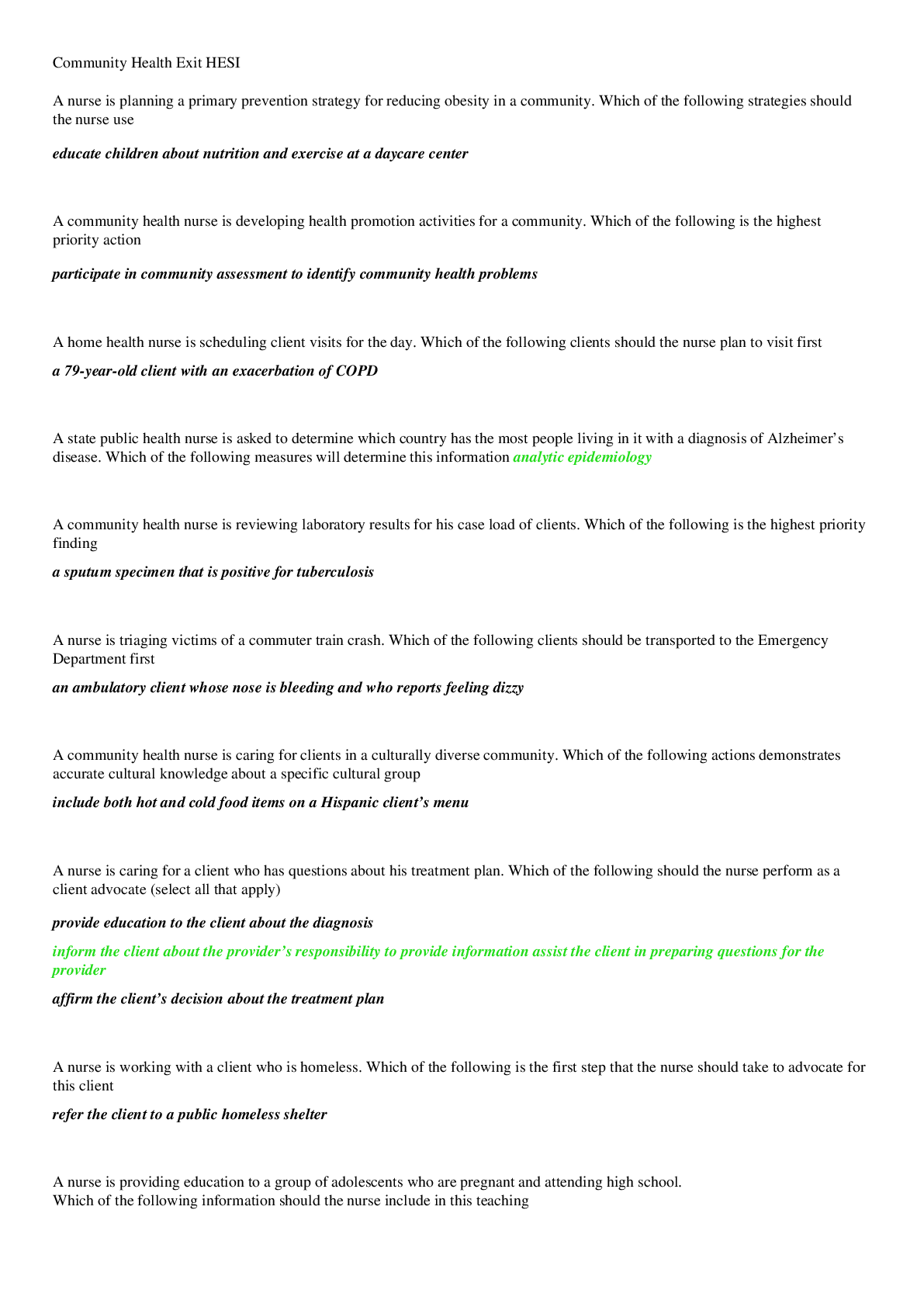

.png)
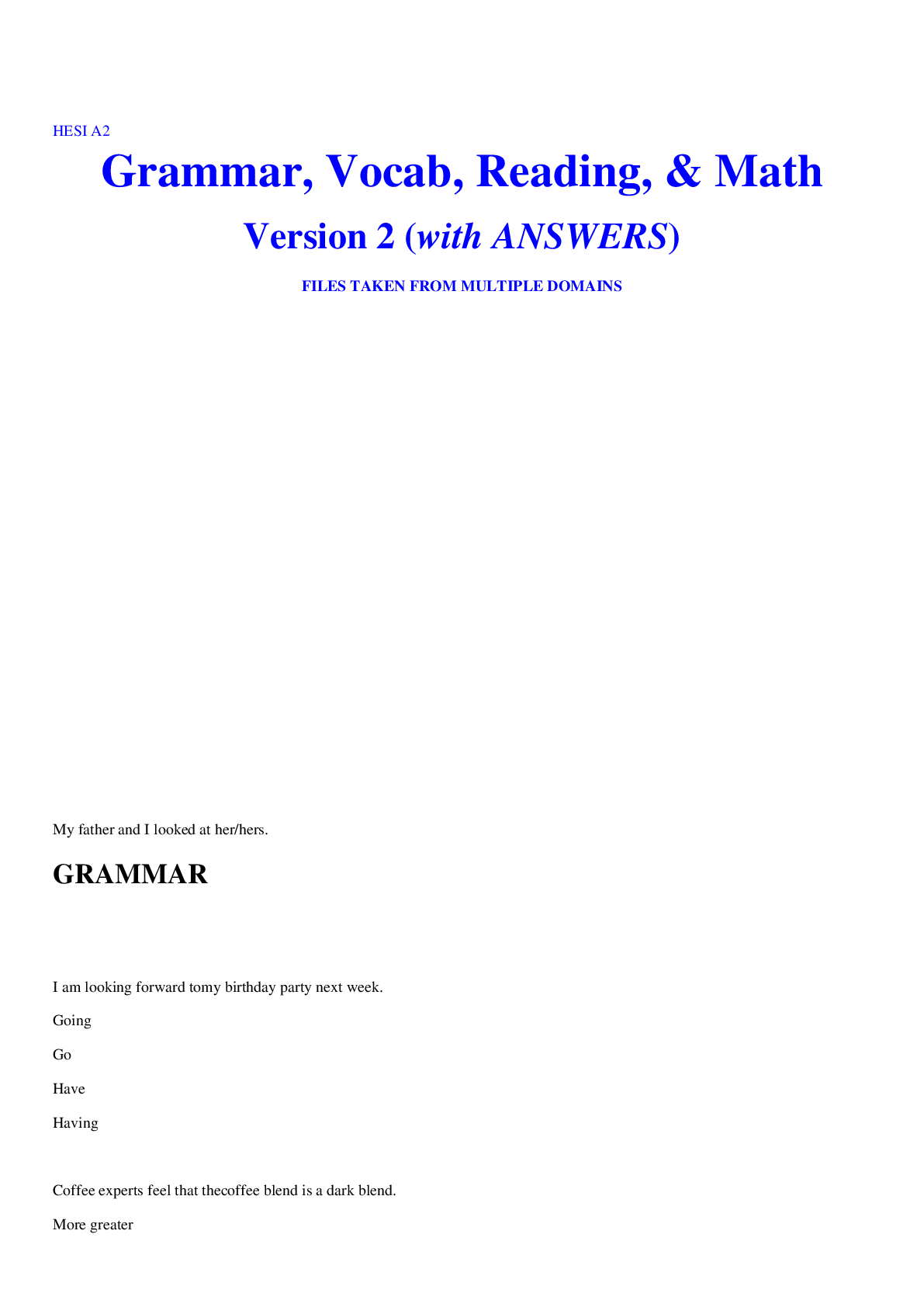



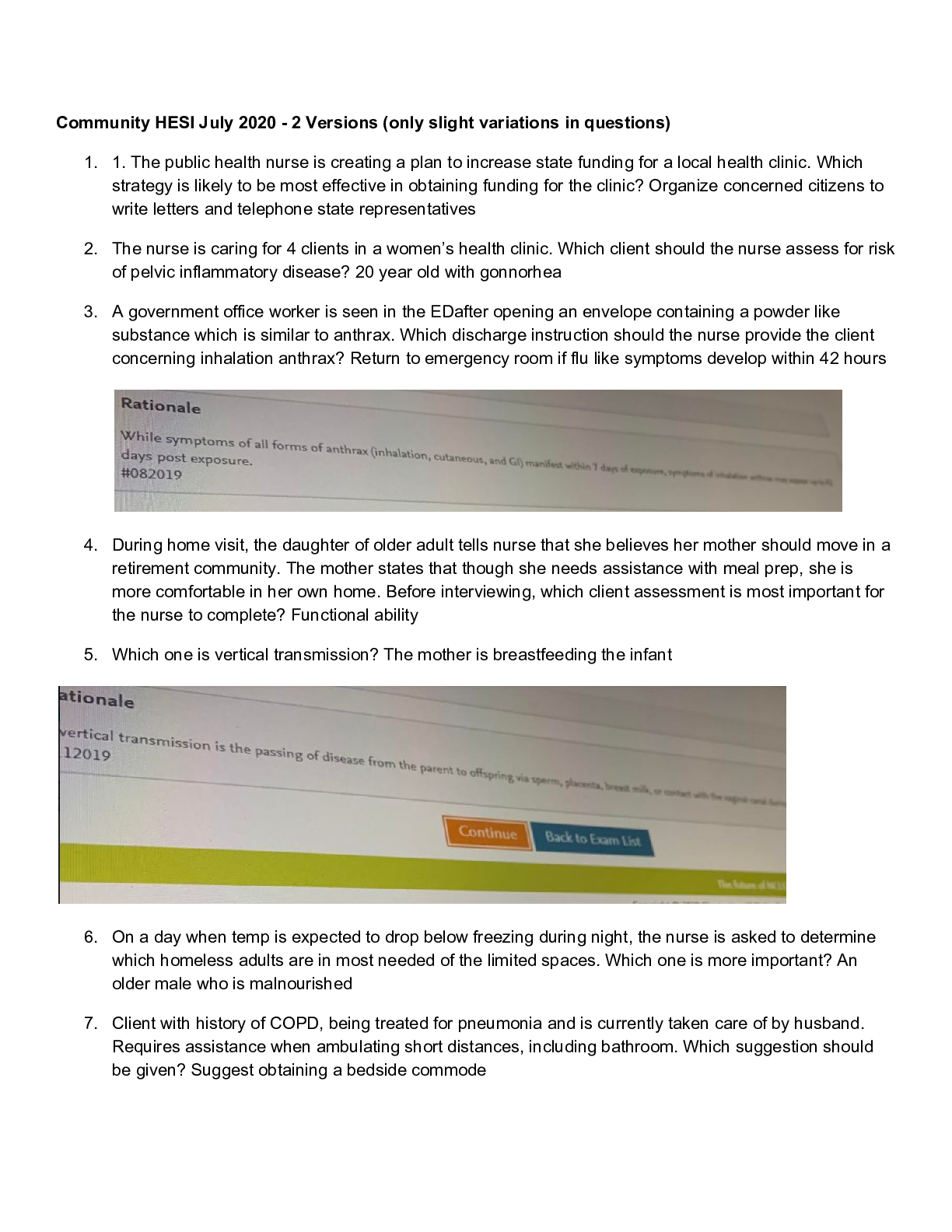
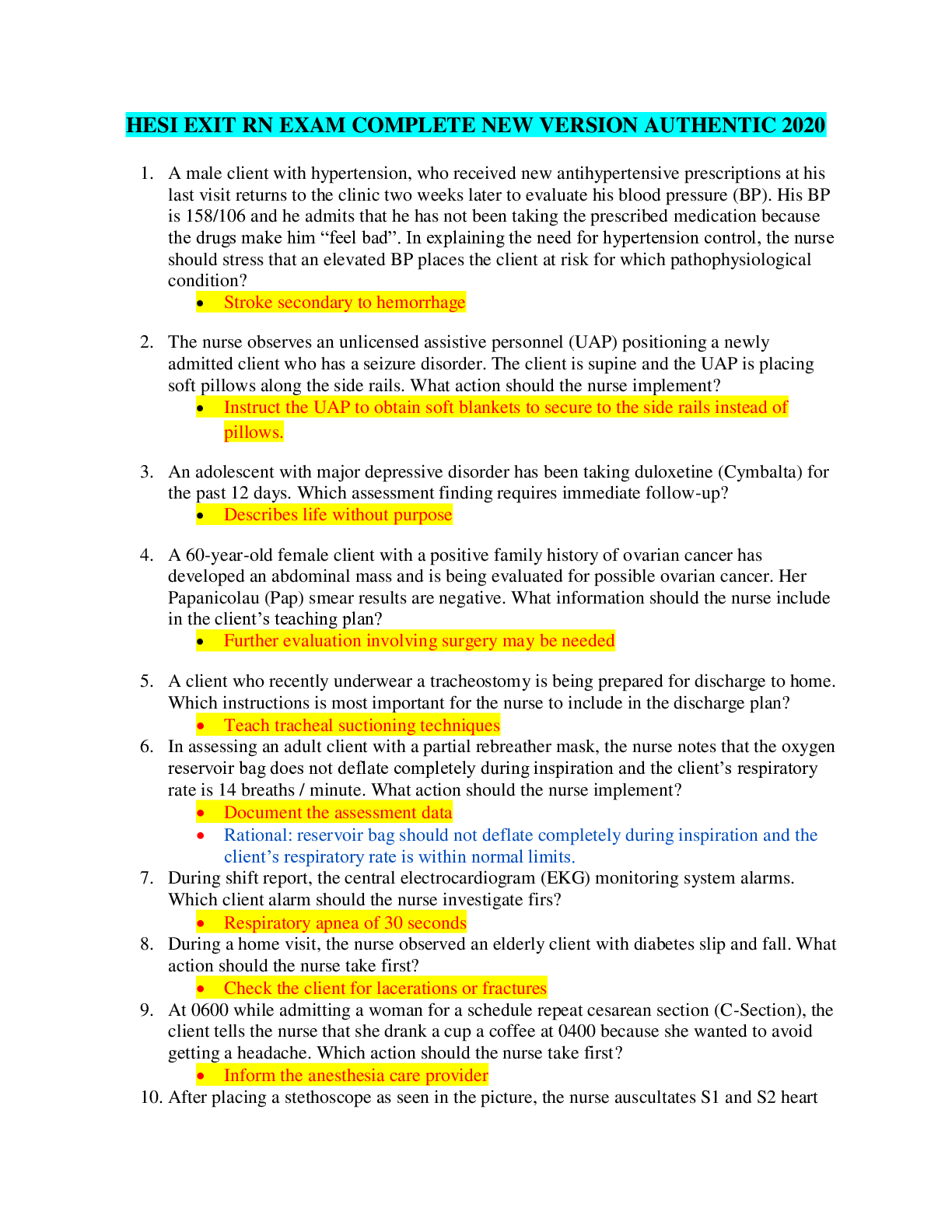
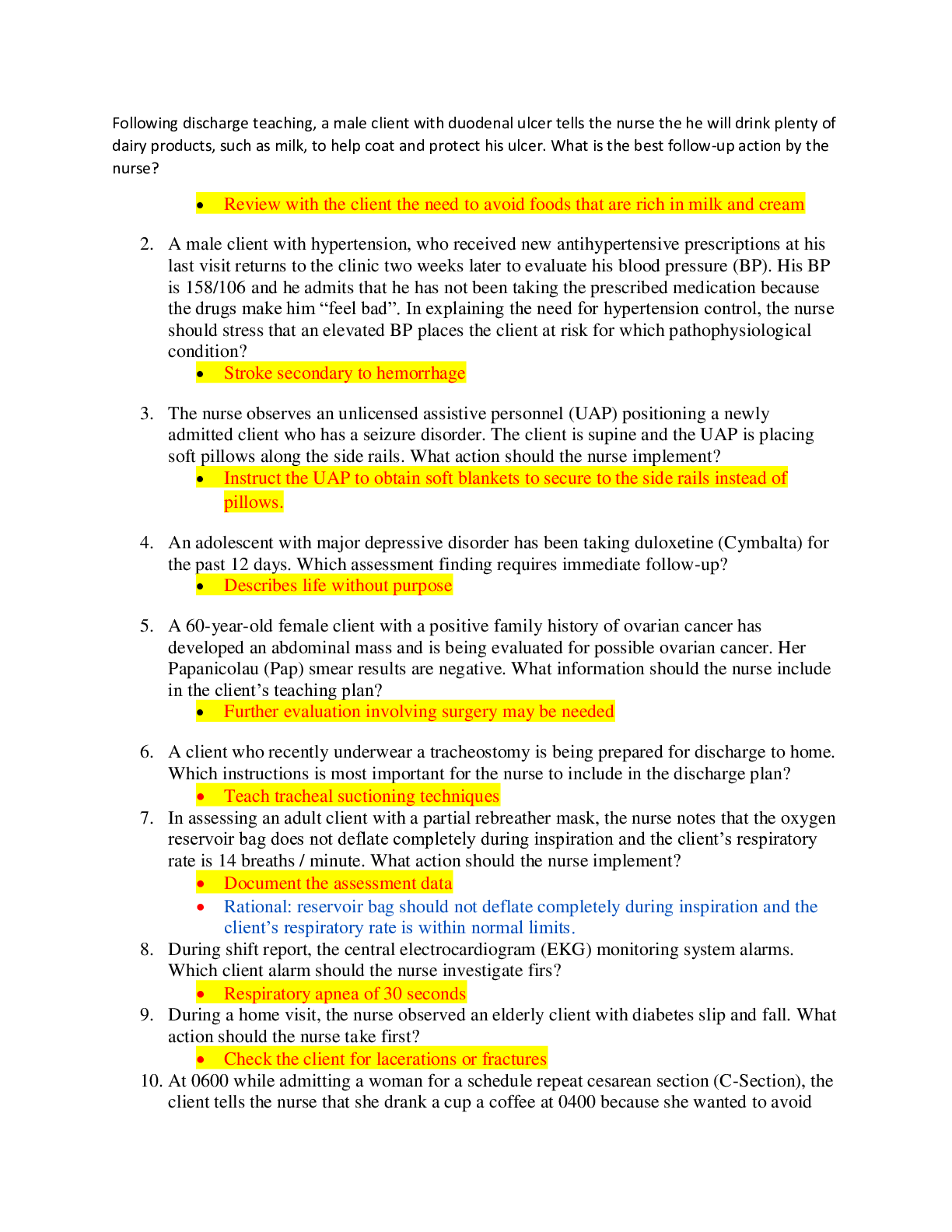

.png)









